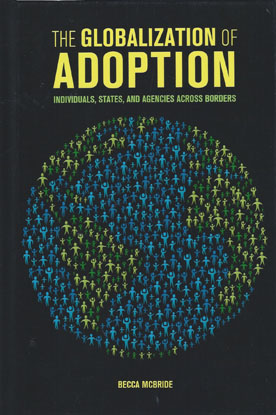
This book expands our understanding of a growing, yet largely unstudied phenomenon: the flow of children across borders through intercountry adoption. What explains the spread of intercountry adoption through the international system over time?
McBride investigates the interconnected networks of states, individuals, and adoption agencies that have collaborated to develop the practice of intercountry adoption we see today. This book tells the story of how adoption agencies mediate between individuals and states in two ways: first by teaching states about intercountry adoption as a policy, and second by helping states implement intercountry adoption as a practice.
McBride argues that this process of states learning about intercountry adoption from adoption agencies has facilitated the global development of the practice in the past seventy years.